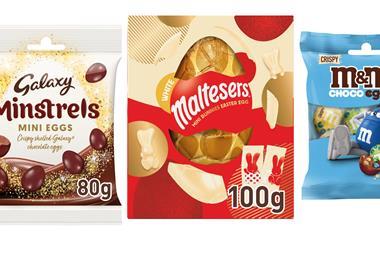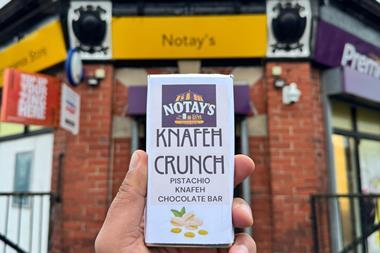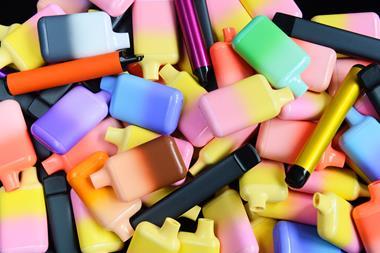If pricemarked packaging doesn’t appeal, then another way to ensure customers remain stimulated by your confectionery offering is to tap into limited-edition products.
Mars is currently promoting its new limited-edition Snickers Maximus, which launched in January. The peanut and caramel Snickers bar without the nougat will be backed by a £1.5m TV and radio campaign. This follows the limited-edition Snickers More Nuts and Twix Fino bars, which were introduced last year.
“Limited-edition products create excitement and eagerness, with consumers wanting to make sure they get their hands on a pack,” says Dhaliwal.
Palmer & Harvey’s Hayhoe agrees, citing Cadbury’s Spots v Stripes Olympics campaign, which has so far involved two limited-edition bars, as being particularly effective. “Limited editions remain very popular with retailers and shoppers. Cadbury is trying to engage retailers and consumers to join in the ‘Games’ with further product launches later in the year. This looks set to capture shoppers’ imaginations.”
Hayhoe states that to be successful limited editions must receive strong commercial support. “They work best if they’re supported by a big brand and visible advertising.”
This is one area that Cadbury can’t be faulted on. It is currently pumping £6.5m into what it calls ‘Race Season’, promoting its limited-edition Big Race bar with TV and outdoor advertising, and digital activity. Overall, Cadbury is pouring £50m into the Spots v Stripes initiative, and last year it invested £14m in the campaign, which included the introduction of the limited-edition Challenge Bar.
“The Challenge Bar enjoyed excellent success, holding the number one countline position in independents in the weeks following its launch ,” says Nash. “The results for the Big Race bar so far look very encouraging,” she adds.
However, Hancocks’ Summerley is less convinced of the initiative’s effectiveness. “We are supporting the Cadbury Spots v Stripes campaign. However, we feel that consumers and indeed retailers won’t truly grasp this message until nearer to the Olympics.”
He states that limited edition bars do not always inspire strong sales. “With regard to limited-edition bars, there have been very few recently that we would deem a great success, to be honest. They clearly give the brand something fresh to shout about, but the sales don’t often stack up to the noise in our opinion.”
Philip Courtenay-Luck, managing director of Bonds Confectionery, is even more damning. “Limited editions are usually variations of existing lines, which offers very little true innovation to the market.” He claims that they tend to “steal from other lines” rather than adding incremental sales.
One limited-edition style of product that is tried and tested, however, is the seasonal variation. Thorntons has a series of seasonal limited editions in inlaid boxed chocolates. “These reflect different customer needs and are seasonalised to make them appropriate and appealing. They have proved very successful as they allow the retailer to keep interest in his range.”
Whether or not you choose to take on seasonal lines, limited-edition products, pricemarked packs, sharing formats, or a mixture of all four, is totally up to you. But the key thing to remember is to constantly re-evaluate and develop your chocolate fixture to ensure it is in tune with your customer base. Says Hayhoe: “With 70% of confectionery bought on impulse, it is vital to get your display right.”
Read more:
Cash in: Chocolate - Share Value



























No comments yet